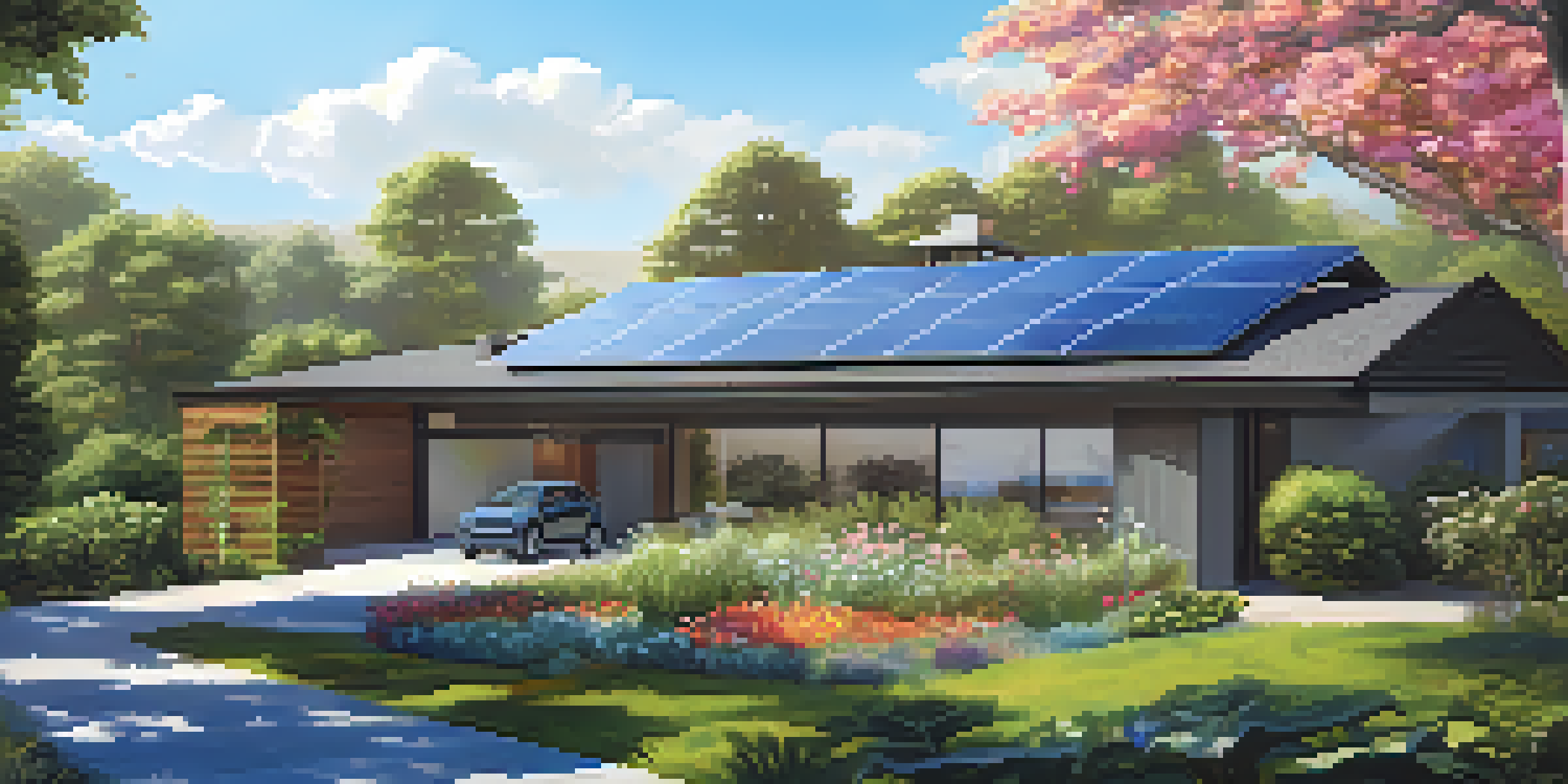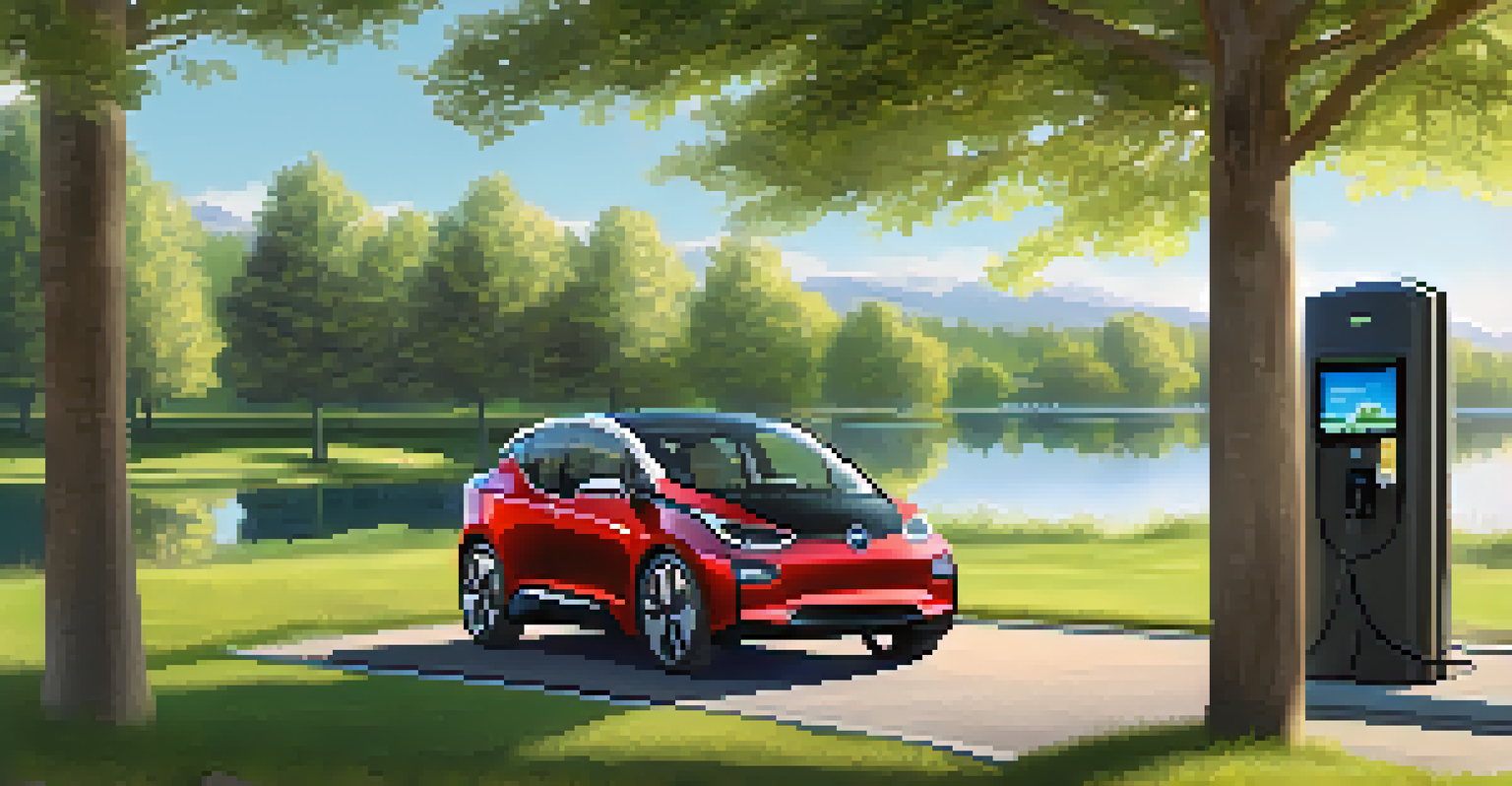The Role of Renewable Energy in Sustainable Living

Understanding Renewable Energy and Its Importance
Renewable energy comes from natural sources that replenish themselves, like sunlight, wind, and water. Unlike fossil fuels, which are finite, these resources can provide energy without depleting the Earth’s resources. This makes them crucial for sustainable living, as they help reduce our carbon footprint and dependence on non-renewable energy sources.
The use of renewable energy has the potential to create a cleaner and healthier planet for future generations.
For instance, solar panels harness sunlight to generate electricity, while wind turbines convert wind energy into power. By utilizing these clean energy sources, we can significantly lower greenhouse gas emissions, contributing to a healthier planet. This shift not only benefits the environment but also fosters energy independence and security.
As we navigate the challenges of climate change, embracing renewable energy is more important than ever. It allows us to create a sustainable future, ensuring that resources remain available for future generations while promoting economic growth in green technologies.
The Connection Between Renewable Energy and Carbon Footprint
One of the biggest benefits of renewable energy is its potential to lower our carbon footprints. Traditional energy sources, like coal and oil, release significant amounts of carbon dioxide and other pollutants when burned. In contrast, renewable sources produce little to no emissions during operation, making them a cleaner alternative.

By switching to renewable energy, individuals and businesses can drastically reduce their contribution to global warming. For example, a household that installs solar panels can cut down its electricity bill while simultaneously reducing its reliance on fossil fuels. This not only creates savings but also promotes a healthier planet.
Renewable Energy Reduces Carbon Footprint
Switching to renewable energy sources significantly lowers carbon emissions, contributing to a healthier environment.
Moreover, as more people adopt renewable energy solutions, the collective reduction in carbon emissions can lead to a more sustainable society. This ripple effect encourages even more individuals to consider making the switch, creating a positive cycle of environmental responsibility.
Renewable Energy Sources: A Closer Look
There are several types of renewable energy sources, each with unique benefits. Solar energy, derived from sunlight, is one of the most popular and accessible forms. It can be harnessed through solar panels for residential use or large-scale solar farms, making it versatile and efficient.
We are the first generation to feel the impact of climate change and the last generation that can do something about it.
Wind energy is another significant player in the renewable sector. By using wind turbines, we can convert kinetic energy from wind into electricity. Countries with vast open spaces, like the United States and Germany, have seen great success in harnessing wind power to meet their energy needs.
Hydropower, generated from flowing water, is also a key renewable source. It accounts for a substantial portion of the world’s electricity production. Each of these sources plays a vital role in creating a diverse and resilient energy system that supports sustainable living.
Renewable Energy in Everyday Life: Practical Applications
Incorporating renewable energy into our daily lives is easier than we might think. Many homeowners are opting for solar panels to power their homes, effectively reducing their electricity bills and carbon footprints. Additionally, some communities are adopting shared solar programs, making clean energy accessible for those who cannot install panels on their own rooftops.
Electric vehicles (EVs) also represent a growing trend in sustainable living. Many EVs can be charged using solar power, further minimizing reliance on fossil fuels. By choosing to drive electric, individuals contribute to a cleaner environment and capitalize on the benefits of renewable energy.
Economic Growth from Renewables
The transition to renewable energy creates jobs and reduces operational costs for businesses, boosting local economies.
Moreover, businesses are increasingly recognizing the value of renewable energy. Companies are investing in energy-efficient technologies and sourcing their power from renewable providers. This not only enhances their sustainability efforts but also appeals to environmentally-conscious consumers, creating a win-win situation.
Economic Benefits of Transitioning to Renewable Energy
Transitioning to renewable energy can have significant economic benefits. Jobs in the renewable energy sector are on the rise, providing opportunities in manufacturing, installation, and maintenance. This growth can help revitalize communities and stimulate local economies.
Furthermore, renewable energy often leads to lower operational costs for businesses. Once the initial investment is made, the ongoing costs of maintaining renewable energy systems are typically lower compared to traditional energy sources. This financial advantage can free up resources for companies to invest in other areas.
As countries invest in green technologies, they can reduce their reliance on imported fuels and enhance energy security. This shift not only boosts local economies but also positions nations as leaders in the global transition to sustainable energy.
Challenges in Adopting Renewable Energy Solutions
While renewable energy offers numerous benefits, there are challenges to its widespread adoption. One of the primary obstacles is the initial cost of installation, particularly for solar panels and wind turbines. Many individuals and businesses may be hesitant to invest upfront, even if long-term savings are evident.
Another challenge involves energy storage. Renewable energy sources, like solar and wind, depend on weather conditions, making it essential to store excess energy for use during periods of low production. Continued advancements in battery technology are crucial to overcoming this hurdle and ensuring a reliable energy supply.
Challenges in Adoption of Renewables
While beneficial, the adoption of renewable energy faces hurdles such as high initial costs and energy storage issues.
Lastly, navigating regulatory frameworks can be complex. In some regions, outdated policies may hinder the growth of renewable energy markets. Advocating for supportive legislation and incentives is vital for fostering an environment that embraces sustainable energy solutions.
The Future of Renewable Energy and Sustainable Living
The future of renewable energy looks promising as technology continues to advance. Innovations in energy storage, grid management, and efficiency will make renewable sources more reliable and accessible. This progress is essential for meeting the world’s growing energy demands sustainably.
Furthermore, as public awareness of climate change increases, more individuals are likely to advocate for and adopt renewable energy solutions. This shift in consumer behavior can drive further investments in clean technologies and encourage policymakers to prioritize sustainability.

Ultimately, the integration of renewable energy into our lives will be a cornerstone of sustainable living. By embracing these solutions, we can create a healthier planet for ourselves and future generations, ensuring that the Earth remains vibrant and resource-rich.